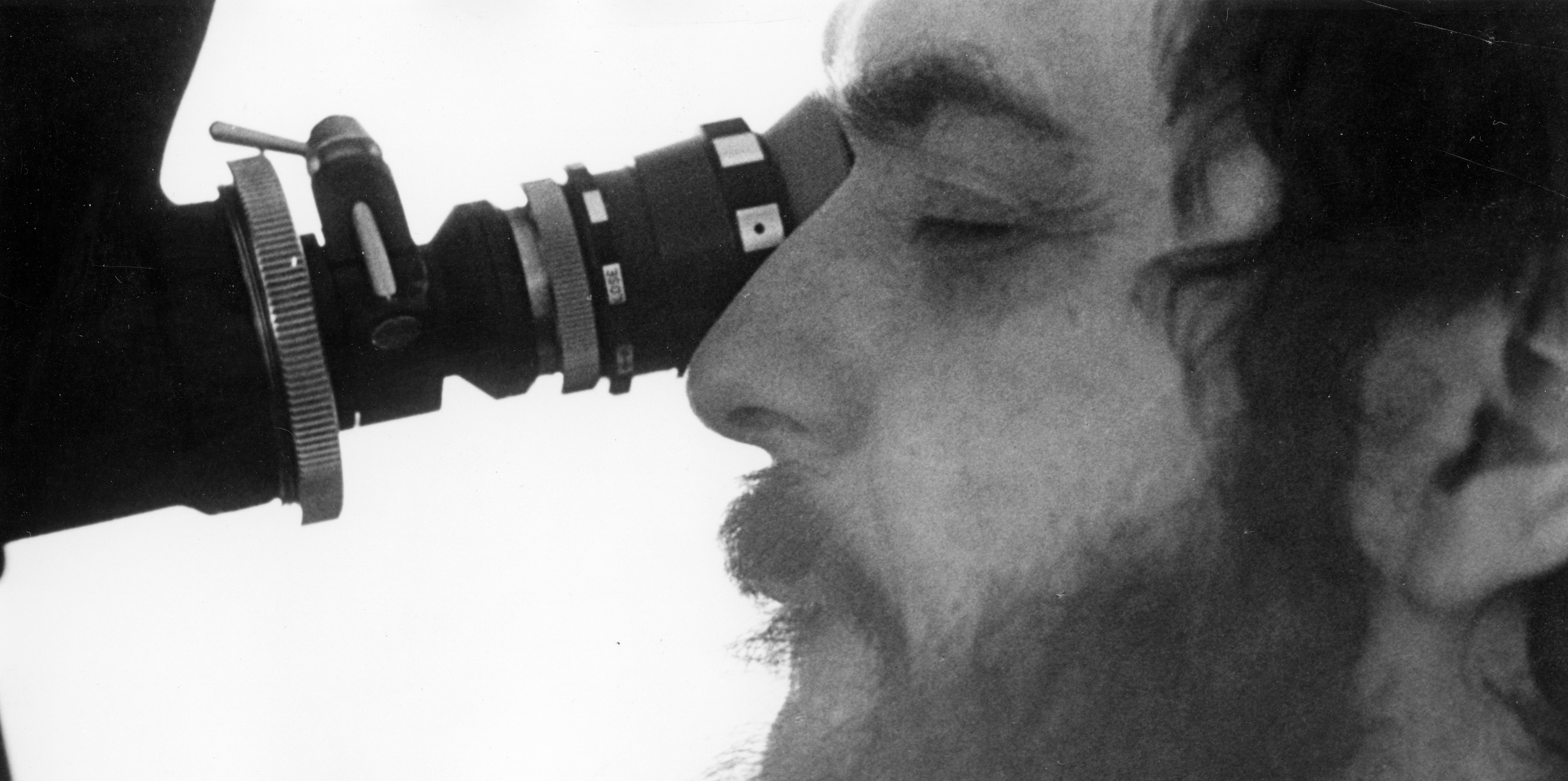
Stanley Kubrick: Quest for Perfection
The filmmaker’s cinematic collaborators recall the man and his very unique methods.
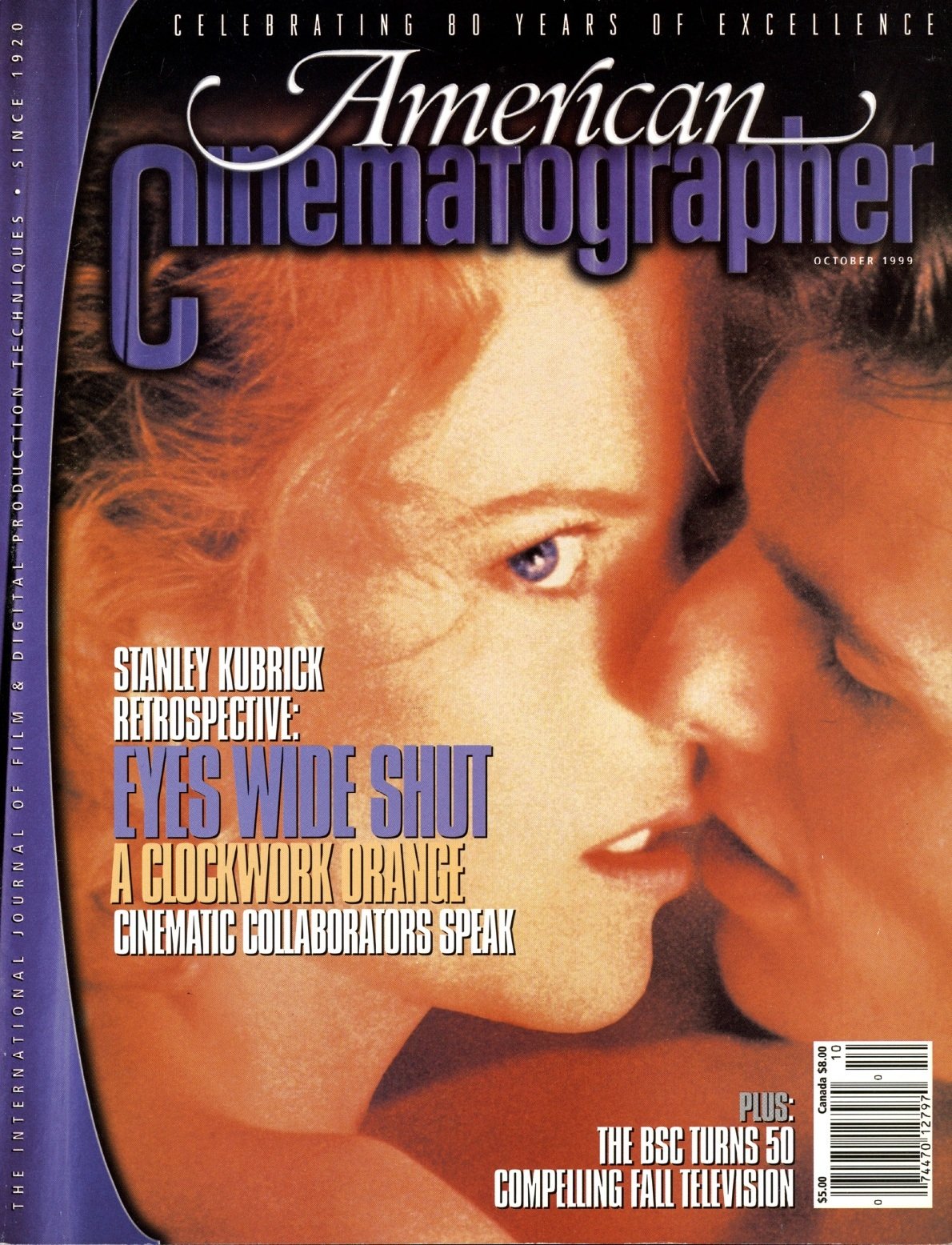
Without question, Stanley Kubrick was one of cinema’s most imposing, exacting, independent, and fiercely original filmmakers. His work, which sometimes took decades to reach the screen, was shrouded in mystery, and once the films were finished, many of the elements that went into them — sets, costumes, props, storyboards and preliminary designs — were destroyed. No one, certainly not his close colleagues, dared discuss Kubrick’s working methods — until now.
Following the director’s untimely death earlier this year — on March 7 at age 70 — several of his collaborators agreed to speak with AC about this often contradictory man who, it turns out, may not have been so reclusive after all.
Some of the following comments — including those of John Alcott, BSC and Douglas Milsome, BSC — were culled from past issues of AC.
Leon Vitali (actor, Barry Lyndon, Eyes Wide Shut; personal assistant, The Shining, Full Metal Jacket, Eyes Wide Shut; casting director, Full Metal Jacket, Eyes Wide Shut): All of this stuff about Stanley being a hermit — he was a homebody, but he’d go out and do his own shopping sometimes. How many A-list directors do their own shopping?
“I just remember that he was always searching. That’s the way I’m going to remember Stanley — always searching. I don’t think he ever just looked at something and said, ‘That’s it.’”
— Dennis Muren, ASC
Larry Smith (cinematographer, Eyes Wide Shut): That’s a misperception, that Stanley was a recluse — he was far from a recluse. He was certainly a bit shy around people that he’d just met for the first time, but that didn’t last long. As soon as he could find something of interest that he could communicate about with that person, he was fine. Stanley had a vast vision of many things. He was an intellectual, no question about it, even though he didn’t come from an intellectual background. His father was a doctor, but Stanley was self-taught. He read books, and he could hold his own talking about anything from politics to religion to sport — you name it.
Stanley also had a very warm, earthy side as well. When I went into the kitchen at his house, he’d come ’round, make some coffee and ask, ‘Do you want some toast, do you want something to eat?’ He’d put some toast in, and the toast would invariably get burnt. He would take it out with his hand and whack it on the table to get rid of the burnt crumbs. ‘Let’s find a knife and put some butter on it,’ he’d say. There’d be a mess all over the place, and the coffee would get spilled. To me, that was fantastic. I’d think to myself, ‘Stanley Kubrick is making me tea and toast!’ You don’t realize how important those little things are until the person dies and you realize that you’re never going to do them again.
Ken Adam (production designer, Dr. Strangelove, Barry Lyndon): Stanley was hoping to do all of Barry Lyndon — or most of it — within literally 30 miles of his home in Elstree. At the time, A Clockwork Orange was a great success, but he had received a lot of threatening letters, which made him a bit reluctant to go to far-off locations. I told him that I couldn’t see that plan working out, because I knew where the suitable stately homes were situated, and with one or two exceptions, they certainly weren’t within that radius of Stanley’s house! His stance on the matter was enormously frustrating for me, but eventually, after five or six months, I got him to look at some of the stately homes [further away], and then to go to Ireland to shoot the Irish locations. Of course, once we were in Ireland, he wanted to do all of the continental sequences there, too.
John Alcott, BSC (camera assistant/cinematographer, 2001: A Space Odyssey; cinematographer, A Clockwork Orange, Barry Lyndon, The Shining): When you’re with Stanley, the working relationship benefits from picture to picture. We’ve collaborated together since 1965, and in working with him, there is always a different outlook, a different idea: ‘Let’s try something different. Is there any way of doing this differently? Is there any way of making this much better than it was before?’ I feel that when you have as much time as we had on The Shining to make sure that the sets are right and that the art director is building them to your lighting design, it is a great privilege. You don’t have that privilege when you work with somebody who lacks the visual perception that Stanley has. He is willing to bend over backwards to give you something you may desire in the way of a new lighting technique, which is a great help. As time goes on, Stanley has become more thorough and more exacting in his demands. One has to go away after having done a film with him, gather knowledge, come back, and try to put that knowledge together with his knowledge into another film. He is, and I’ve said this before, very demanding. He demands perfection, but he will give you all the help you need if he thinks that whatever you want to do will accomplish the desired result. He will give you full power to do it — but, at the same time, it must work. (From AC Aug. 1980.)
“Stanley is correctly reported to be in charge of every detail, and interested in everything from the air-conditioning to the nature of lunch.”
— Garrett Brown
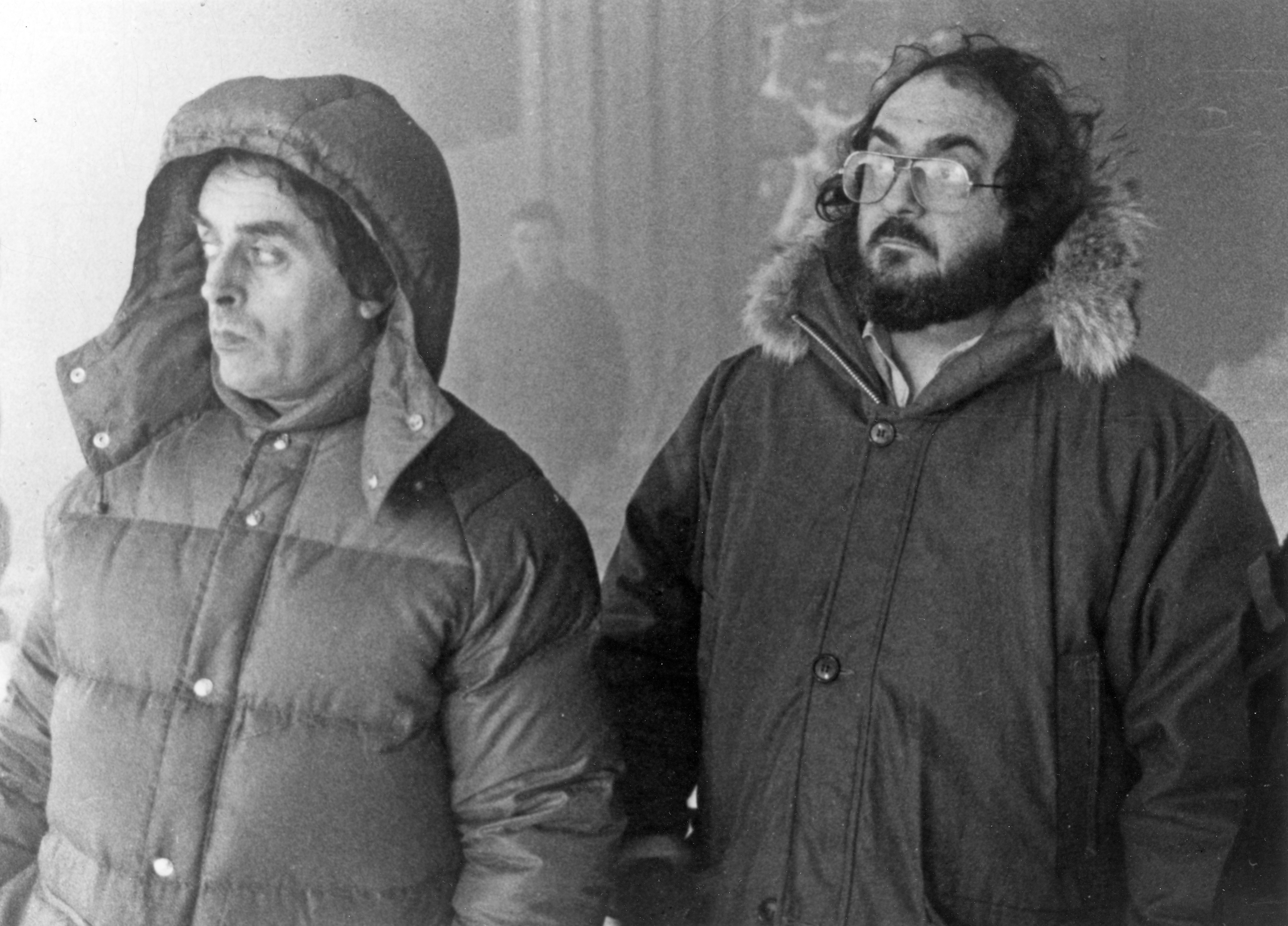
Garrett Brown (Steadicam operator, The Shining): Stanley is correctly reported to be in charge of every detail, and interested in everything from the air-conditioning to the nature of lunch. On The Shining, we were working at Ellstree studios in Hertfordshire for a year, but at the end we needed to go on location in Hampstead Hospital (about 7 miles away), and we began debating about what would be the fastest way to transport the crew down there. Stanley’s idea was that cars would be faster, but I maintained, ‘The underground is by far the quickest way.’ He didn’t believe it, so I said, ‘Come with me, I’ll show you! I subsequently had the great joy of taking Kubrick for a ride on the London underground — which he hadn’t been aboard for 20 years. He was looking around as if he had just arrived from Mars. He had never seen ads and things underground, and he thought it was amazingly dirty. Of course, nobody knew who he was; they probably thought he was a mildly retarded fellow who was having a great time on the train. It was really quite fun, and of course, we beat his driver by an enormous margin, but we still ended up traveling by road.
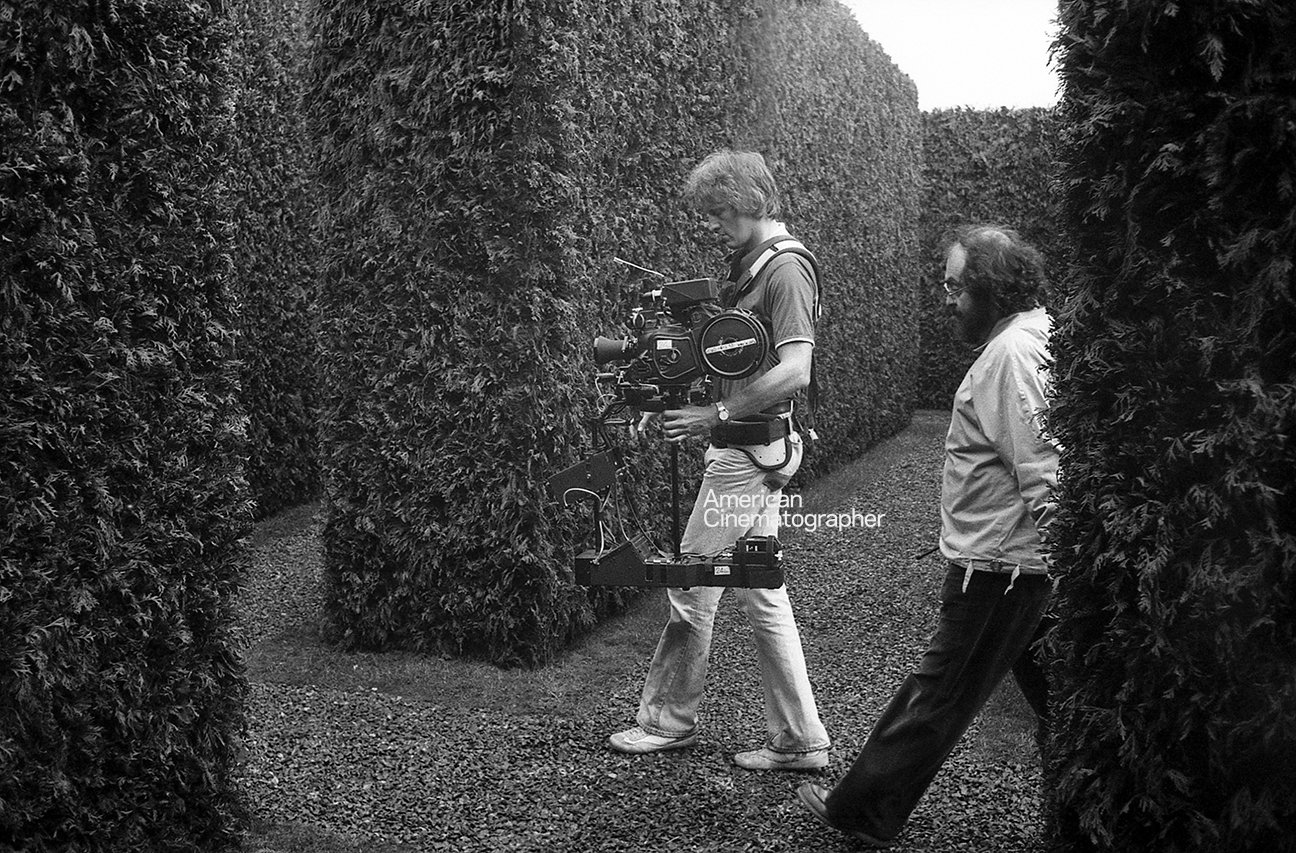
Gilbert Taylor, BSC (cinematographer, Dr. Strangelove): Stanley hated being airborne, so during prep on Strangelove, I did about 28,000 miles in a B-17 Flying Fortress, shooting aerial material [for the background plates]. I remember the night we took off; it was pitch black at about four o’clock in the afternoon, and we were going up with the Fortress to Iceland and then Greenland. It was semi-snowing at the London airport, and suddenly someone said, ‘Stanley’s here.’ I thought to myself, ‘Oh, Christ! Not now!’ He came on the plane and said to my mechanic, ‘The camera mountings are too tight.’ I’d done a lot of that sort of work in my time, and I wanted those mountings to be absolutely solid with the airplane, and not all flippy-floppy. When he began his critique, I said to the pilot, ‘Can you start one engine?’ He fired the engine up, and Stanley literally flew off the plane! As soon as he was out the door, I had them tighten those bolts right up again.
Diane Taylor (Gil Taylor’s wife; plate continuity on Dr. Strangelove): I’d done continuity for Disney on a couple of pictures, so I was desperately trying to get on [Strangelove]. I asked [actor] Peter Sellers about it, and he said, ‘No problem, I’ll ask Stanley!’ Well, being very young and naïve, I didn’t realize that you didn’t ask actors to do that sort of thing. The next time [Stanley] phoned, I asked, ‘Could I come and see you?’ I went to his office and said, ‘I’d like to do the continuity on your film, please.’ There was a total, terrible silence, and he replied, ‘What’s your relationship with Peter Sellers?’ I said, ‘There isn’t one at all.’ Stanley told me, ‘You’re very young, and I don’t think you could really manage this, but you could probably do the flying stuff. Have you flown?’ I answered, ‘Oh, yes!’ — I said ‘Oh, yes!’ to everything. And he said, ‘Come up with some sort of system that would convince me that we could keep track of every [shot].’ I went away and came up with a kind of nautical system for the cameras port and starboard, using colors and numbers. He told me, ‘If you’d like to go ahead, okay!’ [Afterwards], Stanley — the silly billy — cut off all of these things I’d prepared! He found himself in a terrible pickle, because he couldn’t remember what we’d got and where we’d done it! I don’t know why [he did that]. He was a law unto himself.
“I can’t understand why an actor complains
when a director wants to do more takes, because it’s just an opportunity
to do different things, and to give the scene another slant.”
— Leon Vitali
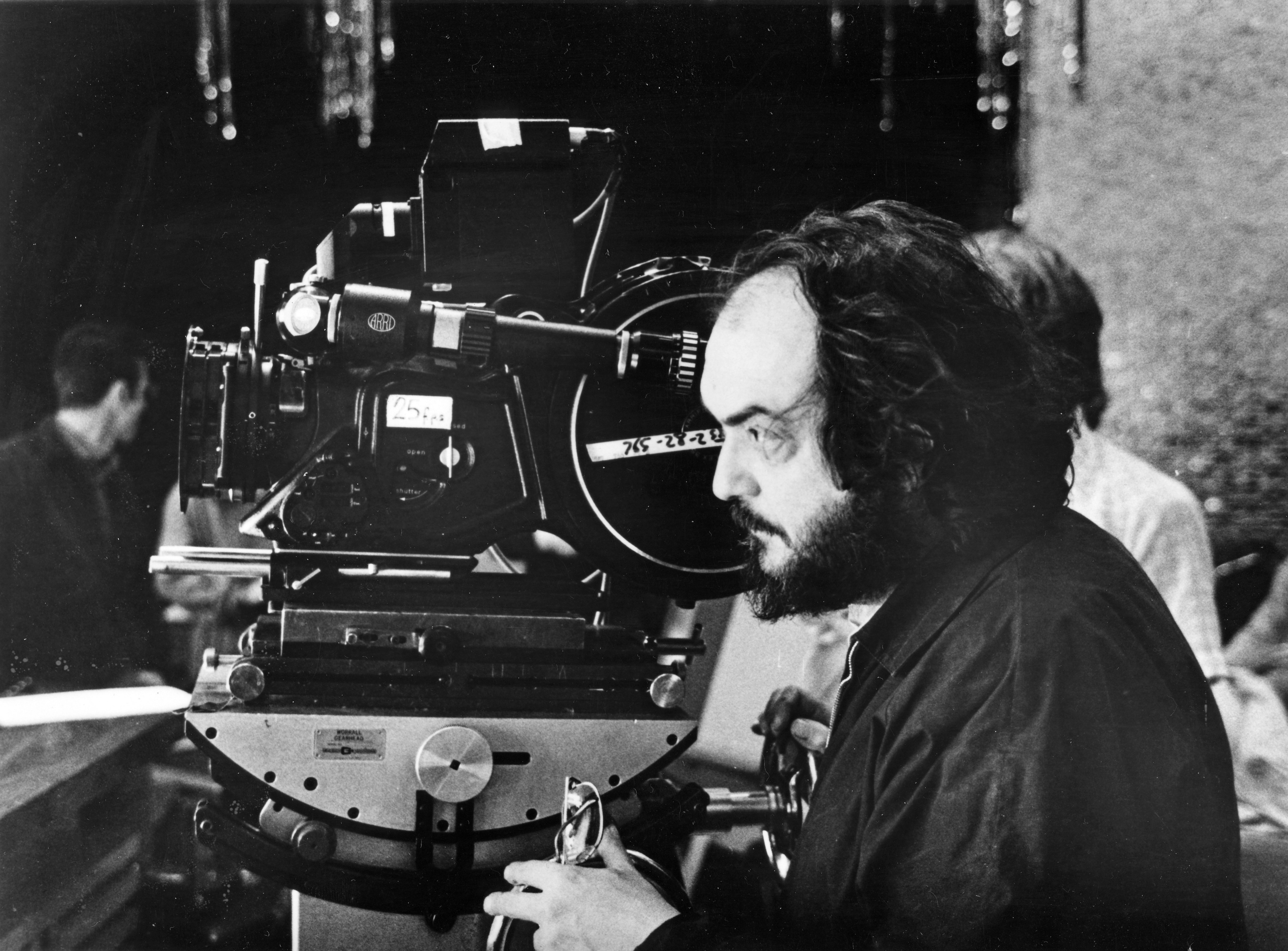
Garrett Brown: After five takes, anyone else in the world would have considered my shot okay. After 14, it was what even I would consider perfect. But after 30, I was entering new realms. I was really conscious of where this foot or that finger went, as if I was a dancer on Broadway night after night, who learned every floorboard in the stage. It was fantastic. When we saw the dailies, the [Steadicam shots] were as smooth and accurate as a dolly and a great deal less constrained.
Dan Richter (played “Moonwatcher” and served as choreographer for the ape scenes on 2001): First of all, you have to understand one thing about Stanley: I never saw him get angry. He just kept working, you know? Once something was right, he moved on to the next thing, but if it wasn’t there yet, he just kept at it! Now, that might mean 40 takes, an extra eight months, tearing the whole set down and re-doing it, or re-shooting completely. The process involved a lot of refinement, and we did a lot of testing — over and over and over again. But I loved the guy for it, because that’s the way I liked to work!
Chester Eyre (director of operations, Deluxe Laboratories U.K.): My association with Stanley began when I served as one of the timers on A Clockwork Orange. Working with him was very interesting, because he was obviously a very important producer/director, and we were all in awe of him. Everyone who’s ever worked with the man has learned a lot from him — about both the industry and themselves. He always managed to draw more out of you than you thought was there.
I began working more closely with Stanley on Full Metal Jacket, and he showed me that there was nothing that couldn’t be achieved if you set your mind to it. He could never understand why people weren’t as absorbed with everything as he was. For example, there was one point on Full Metal Jacket where he wanted a special kind of gate made for a camera, and he telephoned an expert who had long since retired. He called me the next day and said, ‘I can’t believe it. I offered this man the chance to make a special gate for me, and he told me, ‘I’m sorry, I’ve retired.’ He simply couldn’t understand why the man didn’t share his enthusiasm.
Leon Vitali: I can’t understand why an actor complains when a director wants to do more takes, because it’s just an opportunity to do different things, and to give the scene another slant. Stanley was a wonderful director to work with as an actor. From the first day I met him on [Barry Lyndon], it was just a wonderful relationship. He was a very, very open person to talk to. He also had a unique way of working: it would only be you, whoever you were acting with, and him. Everyone else disappeared; there were no cameras, and nobody else was on the set, so you’d be very, very focused. During that time, he’d be looking for angles through his Arriflex viewfinder. You always had to do the scene for real, even if you were rehearsing, because you never know what’s going to happen. The entire course of the scene could change. If it wasn’t clicking for some reason, we’d all go to his caravan and work on the scene. He’d say, ‘Well, how would you say this? How would you do this?’ All the time, he was probing you to find what it was you were trying find.
It was just the most magical experience to work for this man, and it happened on Eyes Wide Shut as well, because I was working for him as an actor again [playing the man in the red cloak in the orgy sequence]. We hadn’t really discussed my role in any detail whatsoever, and he didn’t say anything to me through the whole first day of shooting. I found our interaction to be almost like a sort of a teasing game, and Stanley finally said, ‘I haven’t said anything to you. Just keep doing what you’re doing. It’s almost like a sadistic English schoolmaster talking to this unfortunate pupil.’ I just developed that idea more and more [as I confronted Tom Cruise’s character]. My tone was sarcastic and kind; it wasn’t brutal and sort of, ‘Remove your mask!’ It was all very, ‘May I have the password, please?’ Everything was very polite, which made it a bit more threatening, really. I felt exactly how I felt when we were doing Barry Lyndon. Stanley gave me a wonderful freedom.
“I’ve actually had a much harder time working with a lot less talented people than Stanley Kubrick.”
— Douglas Milsome, BSC
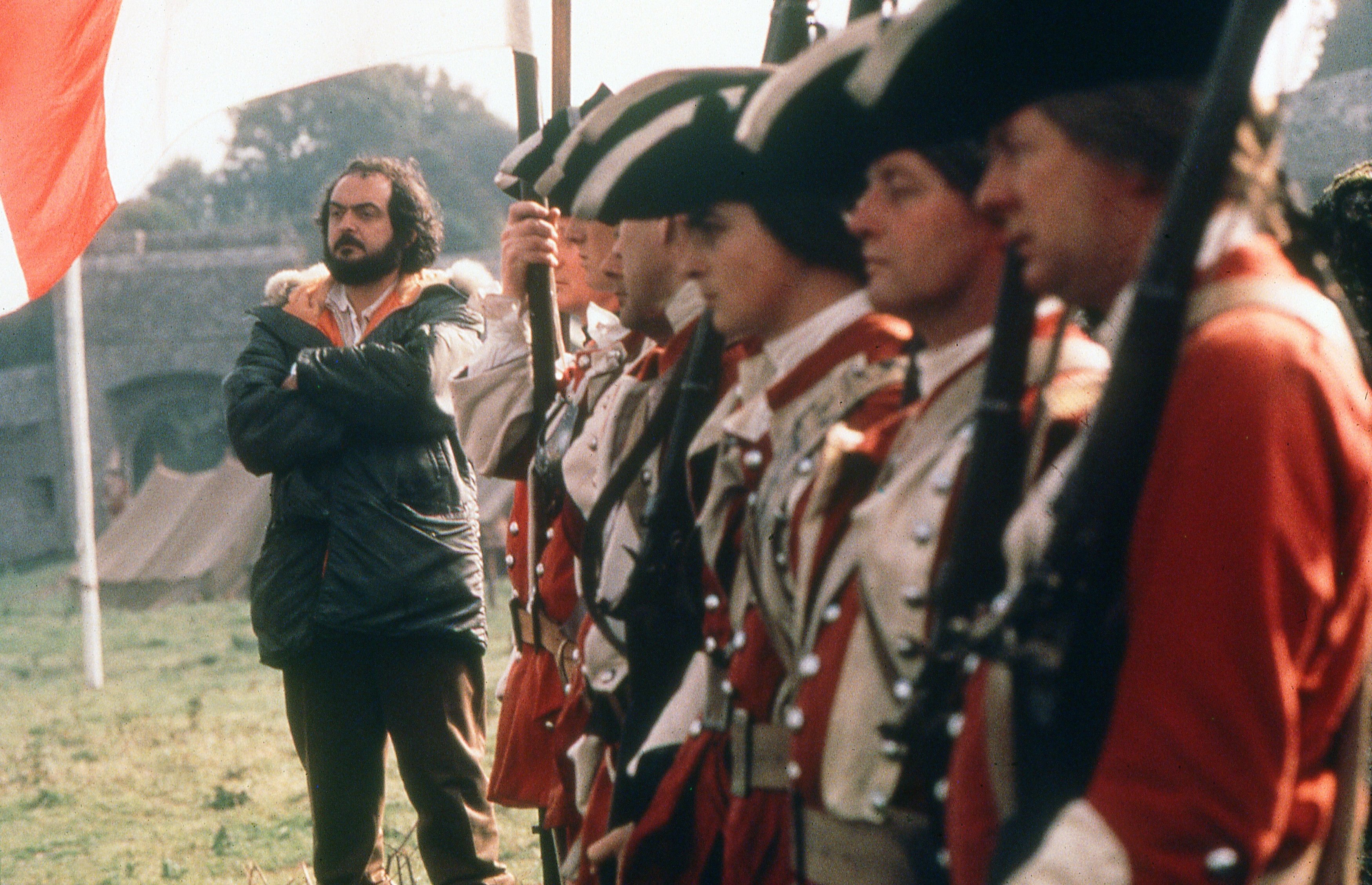
Douglas Milsome, BSC (camera assistant, A Clockwork Orange, The Shining; cinematographer, Full Metal Jacket): I’ve actually had a much harder time working with a lot less talented people than Stanley Kubrick. He’s a drain because he saps you dry, but he works damn hard himself and expects everybody else to. Sometimes it becomes a plod because it’s so slow and intricate, but he loves to do things quite differently than they’ve been done before. You can’t really do that sort of thing off the top of your head, so you work very hard to get it together and make something different which bears his mark. Sometimes the relationship can get a little strained because you’ve got to be devoted to him. You eat, drink and sleep the movie, and you’re under contract to Stanley body and soul. But he allows you the time to get everything absolutely right, which is what I find so rewarding. (From AC Sept. 1987.)
Martin Hunter (editor, Full Metal Jacket): Full Metal Jacket was my first feature. [Stanley taught me] that to impart the intended emotion of the scene, it’s crucial that the reactions be precisely correct. Many [directors] believe that reactions are something you pick up at the end of a scene; they’ll just run the camera and say, ‘That’ll do,’ which is not the best way to do it. [Stanley] would shoot take after take of people who were only observers in the scene, and didn’t have any dialogue. Then, as we were cutting it, he’d comb through the material exhaustively. I remember saying to him once, ‘Stanley, would you ever consider looking at a couple of takes and picking a reaction shot that works, and not bother to look at the others?’ He looked at me in some shock and replied, ‘I’d never think of doing that. So much work has gone into it so far, why not take it to its conclusion?’
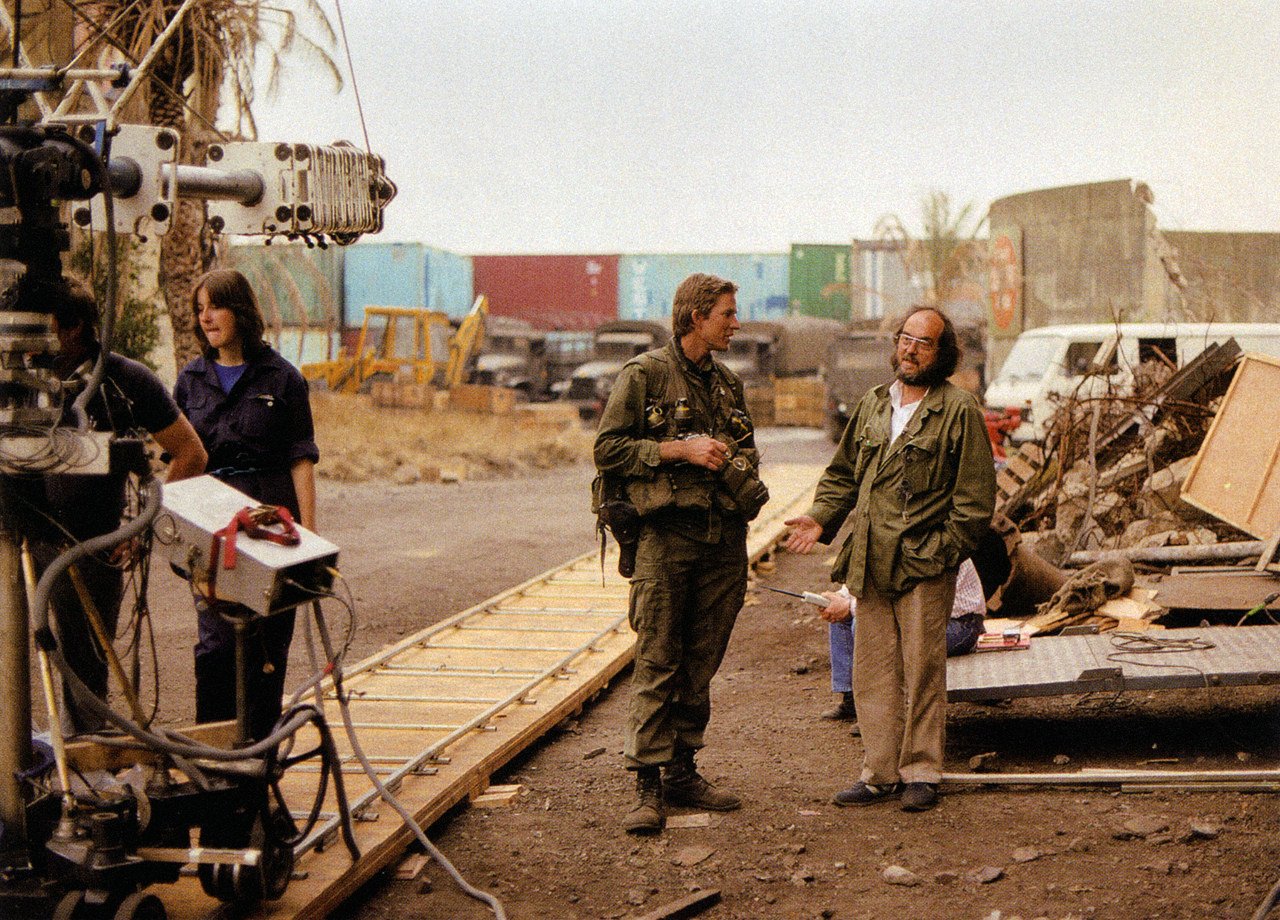
Ken Adam: On Strangelove, it wasn’t so much the time one had to spend — it was Stanley’s continuous questioning of ‘What makes you tick?’ That could be soul-destroying. He wanted everything that I did to be justified, and that I found very trying. You finally are liable to lose your self-confidence if everything you do is being questioned, but that was because he wanted to make absolutely sure, intellectually, that what I came up with was right. For me, design, like so many other creative processes, is instinctive. Stanley knew practically every other job as well as and better than most of the other film technicians — he certainly knew photography and had a brilliant visual sense — but he didn’t really know design!
Gilbert Taylor: It’s pretty well universally known that Stanley was a frustrated director of photography, among other things. I never had any trouble with him, though. He had a habit of taking Polaroids and saying, ‘I think you’ve got too much light on this.’ And I’d say, ‘Well, your Polaroids might have too much light, but on my negative it’s dead right!’ I mean, that’s the sort of thing you had to put up with. He was a completely one-man band, but he was very talented!
“He was incredibly interested in people’s lives and the sorts of mundane details that would be a total surprise to people who didn’t know him. When you knew him, you’d be surprised at just how ‘normal’ a person he was.”
— Martin Hunter
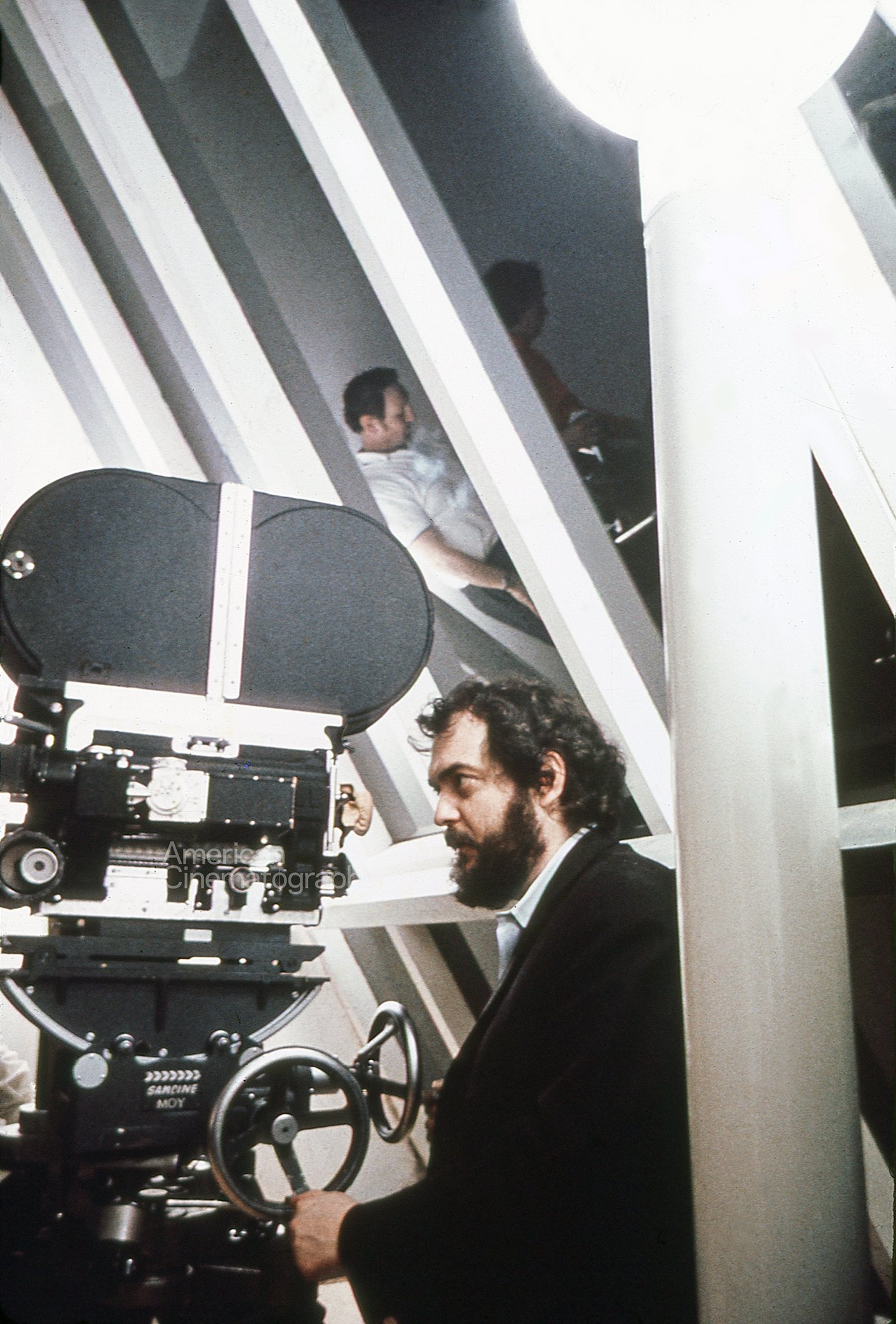
Martin Hunter: Stanley once quoted Napoleon to me: ‘A general should be able lead a cavalry charge or boil a chicken.’ The first time I actually had a conversation with him was when I was an assistant sound editor, and we were doing the mix [on The Shining] at Elstree Studios. He had caterers bring food into the mixing theater. He didn’t want anybody to take off and have long lunches — he wanted to make sure we were all captive there. Tables were laid out, and by the time I’d got my food, there was no room at any table but his! He was sitting there with his daughter, Vivian, and I felt somewhat embarrassed about sitting by the great man. I guess I had thought he was remote and unapproachable until I met him, but then I found him immediately approachable, and we just kind of chatted. He was incredibly interested in people’s lives and the sorts of mundane details that would be a total surprise to people who didn’t know him. When you knew him, you’d be surprised at just how ‘normal’ a person he was.
Gilbert Taylor: You didn’t have a lot of fun with Stanley, because if anybody laughed out loud on the set, they got removed from the floor. He hated anybody who laughed [while working]; we certainly weren’t allowed to laugh on Dr. Strangelove.
Larry Smith: Stanley and I had a good understanding because we laughed at a lot of things. He was a very humorous man. A lot of people don’t understand that about Stanley; he was the funniest fellow you could ever meet. He told some incredibly funny stories and jokes. I’m quite an effervescent sort of person when I’m shooting, and I used to joke with him all the time, sometimes in very serious situations.

Martin Hunter: Between The Shining and Full Metal Jacket I used to do everything for Stanley, from taking meetings with the top brass at Technicolor to occasionally feeding the cats and walking the dog. When we were dealing with the restoration of Dr. Strangelove, one of the people at Technicolor asked me what my title was, and I said, ‘I’m not sure. I’ll get back to you.’ When I asked Stanley what my title was, he asked me, ‘What’s this other guy’s title?’ I said, ‘He’s Director of Operations.’ And he replied, ‘Tell him you’re my Director of Operations.’
Ken Adam: [On Barry Lyndon,] Stanley had my continuity sketch artist do hundreds of sketches using various lenses on groups of soldiers, to see how they would look through a 50mm or wide-angle lens. We also experimented with having the first line of infantry in proper uniforms, the second line in paper uniforms, the third line as cutouts, and so on, [and shooting with them] on a limited scale. I always felt that he put such a great amount of effort into the attack and defense sequences because he was thinking of Napoleon, and this approach would have been of vital importance on that project.
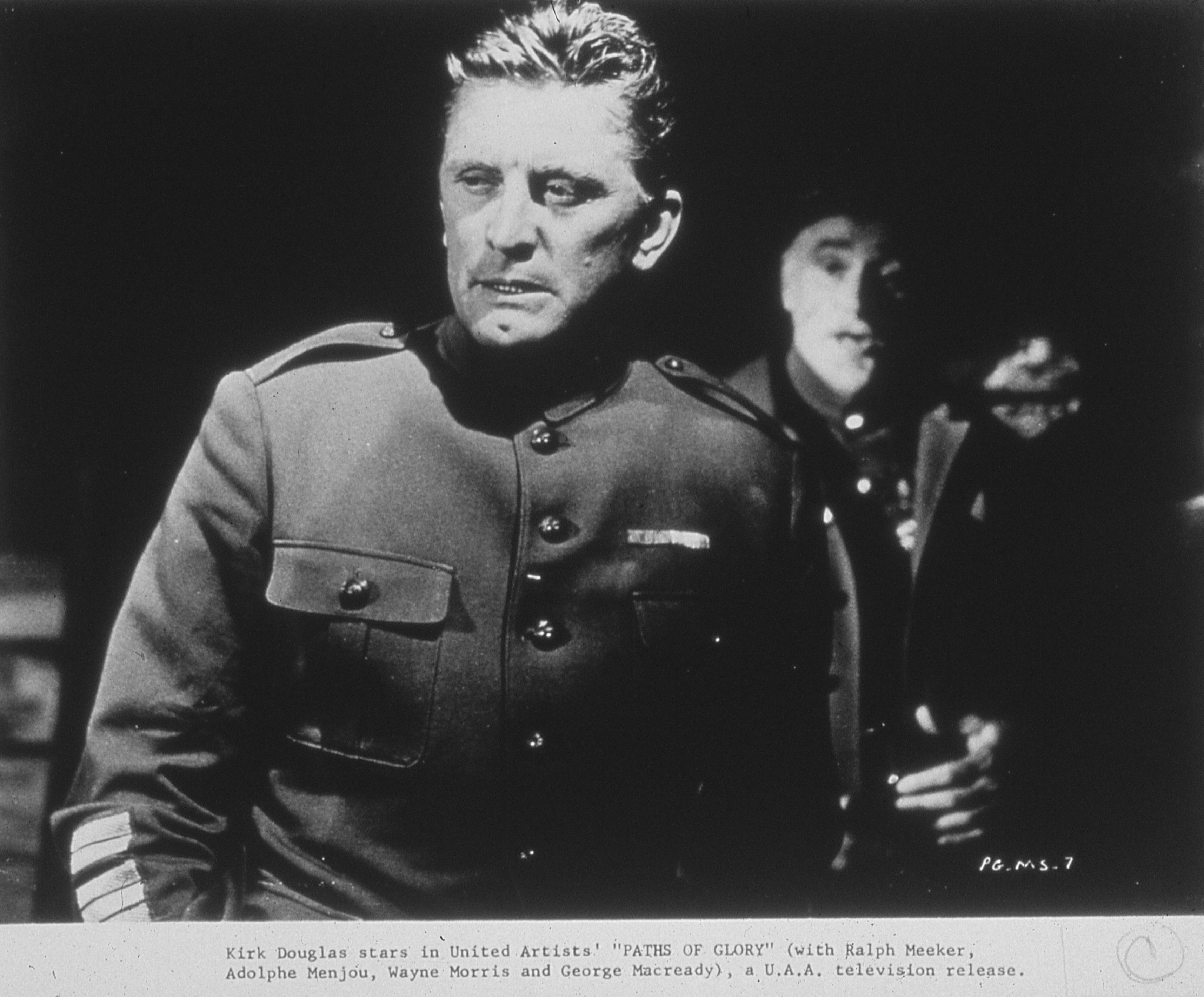
Chris Cunningham (animatronics effect expert, who was helping Kubrick develop the science-fiction project A.I., later filmed by Steven Spielberg): I met Stanley in late 1994, and I worked with him all through ’95. He wanted to see if a [synthetic] child could be made using animatronics to avoid digital effects work, and I was trying to talk him into doing it using computer graphics because I don’t think animatronics are very good. The ironic thing about it was that I was a cynical animatronics person, and it was almost like building an animatronic boy as perfectly as possible would only serve to show him that it still would never be perfect enough.
Dennis Muren, ASC (ILM visual effects supervisor, consultant on A.I.): He wanted the kid to look sort of real but not real. I just remember that he was always searching. That’s the way I’m going to remember Stanley — always searching. I don’t think he ever just looked at something and said, ‘That’s it.’
Ned Gorman (ILM visual effects producer, consultant on A.I.): It seemed to me that getting a ‘Stanley Kubrick’ performance from this CG kid was going to be really problematic. That’s my personal opinion, but I have a sense that he was so hands-on it would have been almost impossible for him to work with an animation director and get what he wanted. Something I didn’t quite say to him was that if his live-action pictures took two years to post — given his well-deserved reputation for perfection — I could see something like this going on for five years. Presented with the infinite palette of possibilities digital techniques allow, Stanley would have created something amazing, but it could have been tough for him to know when to stop. He was the master and I mourn for the films we won’t see.
Ty Ruben Ellingson (A.I. preproduction effects artist): Kubrick wanted a lot of extra frames on the head and tail of every effects shot. He wanted to be able to say, ‘I want this kid to go pick up a ball and walk to the next room,’ and he really wanted it from before and after. I think in a weird sense, he was playing back to his strengths. By leaving an unknown in there, it was like shooting all of those takes: he was leaving himself an option to move around a little bit.
“He was persistent, insistent, eager for the technology — eager to understand it, deal with it, and use it.”
— Ed DiGiulio
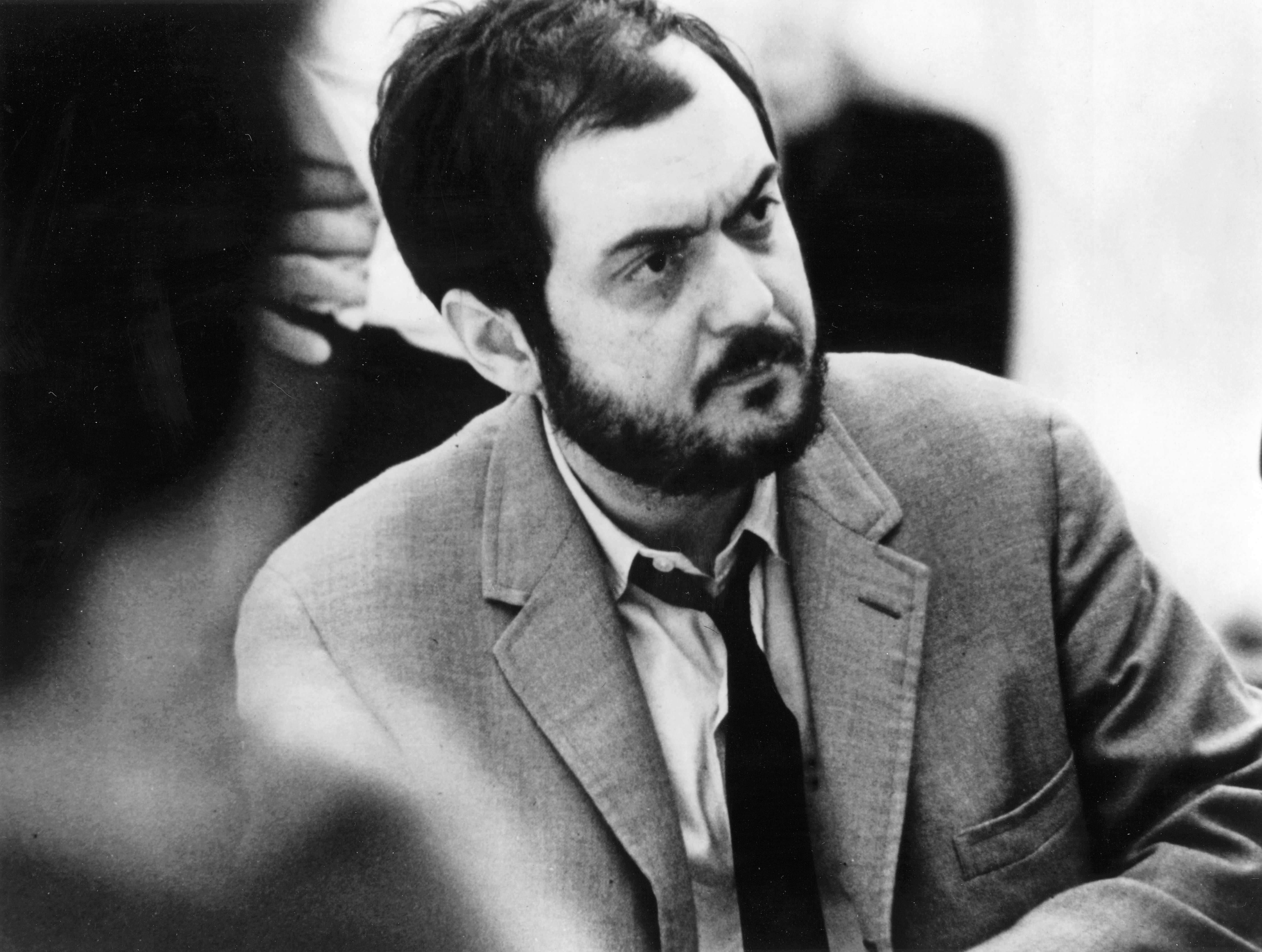
Dennis Muren: Stanley lived on the telephone, just sort of keeping up with things, like where is digital [technology] at? The last time I heard from him, he left me a voicemail and said he’d call me back up at about 9 o’clock. I counted out the time difference [between England and the U.S.], and that was about 5 a.m. his time! I think he just lived at night. He was always up late, at least until 1 or 2 o’clock, because that’s when I would often talk to him. I think it was because he always needed to talk to people in the States. Everybody got phone calls from him. He would call ILM and ask for me, and if I wasn’t there, he would say, ‘Well, can you put me in touch with somebody in optical?’ I think John Knoll got a call like that, and I know Stefan Fangmeyer got a call like that. I was even getting calls at home on Sundays. I still don’t know how he got my home number.
Gilbert Taylor: Stanley used to telephone me at home, at around midnight, and say, ‘Gil, I want to buy a camera, what shall I buy? And what should I buy along with it?’ He’d spend a whole hour talking to me about which camera he should buy — it was nothing whatsoever to do with [his current] movie or anything! I’d talk to him about it, say ‘Bye-bye, Stanley,’ and not hear from him for another year. He was a very strange man.
Ed DiGiulio (President of Cinema Products, supplier of camera equipment for A Clockwork Orange, Barry Lyndon, The Shining, Full Metal Jacket and Eyes Wide Shut): Stanley’s death was shocking. I really enjoyed interacting with him, and I still feel a great love for him. He was persistent, insistent, eager for the technology — eager to understand it, deal with it, and use it. You had mixed emotions with Stanley. Generally speaking, my attitude always was, ‘What are you bugging me for? Get out of here!’ But then I began to respect and admire him, and to appreciate that he was a true filmmaker. Since then, I’ve often said that filmmaking is an art form, and its palette is technology. Stanley kept pushing the envelope to actually use technology to enhance his filmmaking and storytelling.
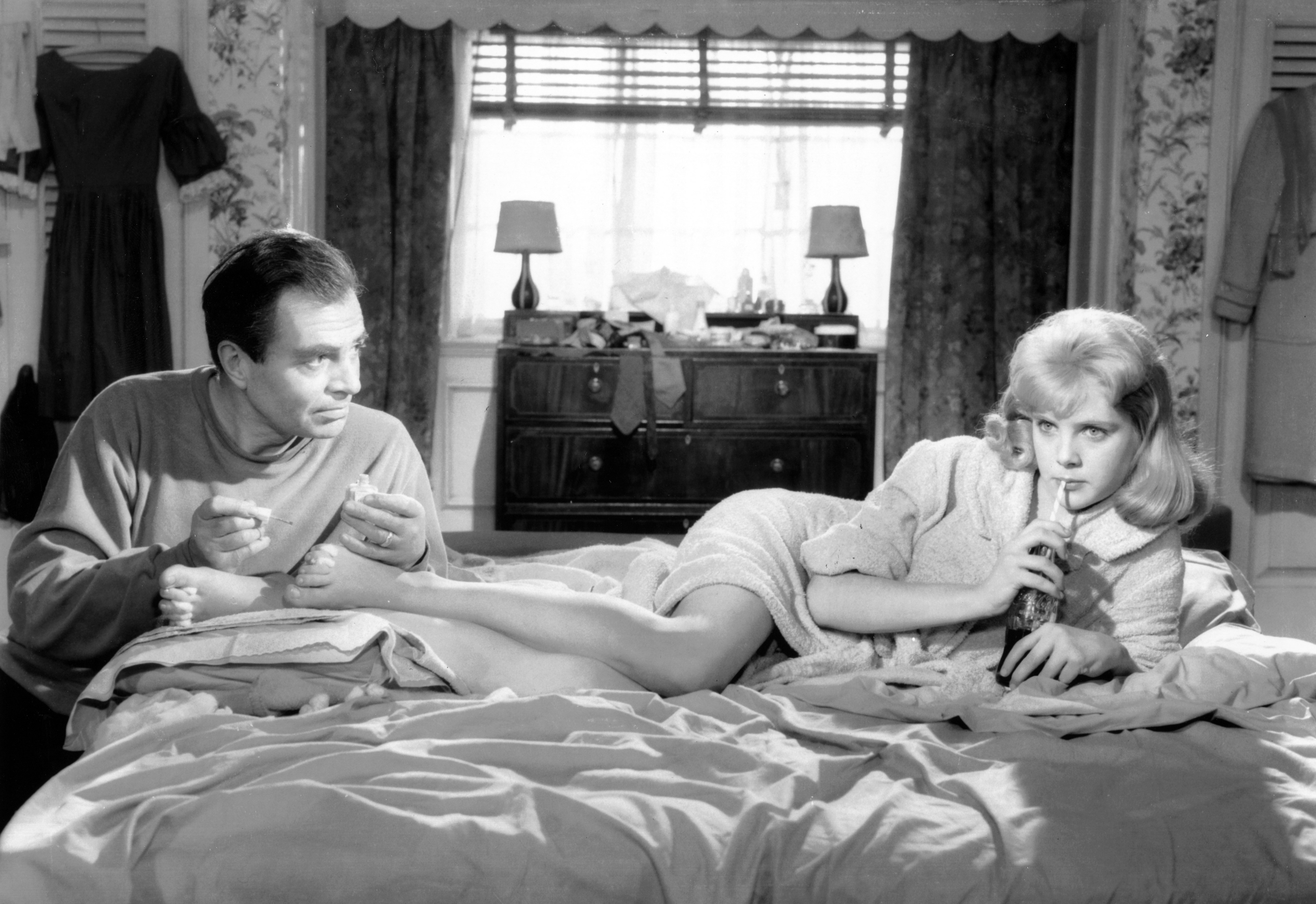
Dennis Muren: Stanley’s death was a terrible loss. You’d think that you just wouldn’t hear from him for awhile, but the calls would just keep on coming, even after he turned 70. His passing was a real shock and a tragedy; the guy was just great. I mean, he’s one of the few people whose movies are totally him. Nobody else could copy him, and he wasn’t trying to copy anybody else. He was a real artist.
Garrett Brown: My first reaction was perhaps the best sort of feeling one could have at the death of a true artist: I was just sorry that I wouldn’t get to see any more of his movies. I won’t ever get to see A.I. or Napoleon.
Ken Adam: I had just arrived in New York, where I’d been invited by the Lincoln Center Film Society to give a lecture on design, and two producer friends met us at the airport to tell us about it. I paid tribute to Stanley at the lecture, and it was really heartfelt. I don’t think I’ll ever have that sort of relationship with a director again. I recently found some very interesting correspondence from Stanley, and it’s really very touching. You know, we were really like a sort of marriage!
Gilbert Taylor: I was amazed. I thought, ‘Gosh, somebody put something in his coffee,’ or something like that! I didn’t think it was natural, because he was the sort of figure that would still be around at 90, you know?
Martin Hunter: I sent Stanley a fax on his 70th birthday, and he sent me back a fax thanking me for my fax! That was our last communication. [His death] came as a huge shock, and it was very sad. I came to terms with it by deciding that Stanley had left us in the way he’d done everything else: it was entirely unexpected. He had seemed immortal, but he just fooled us all again!
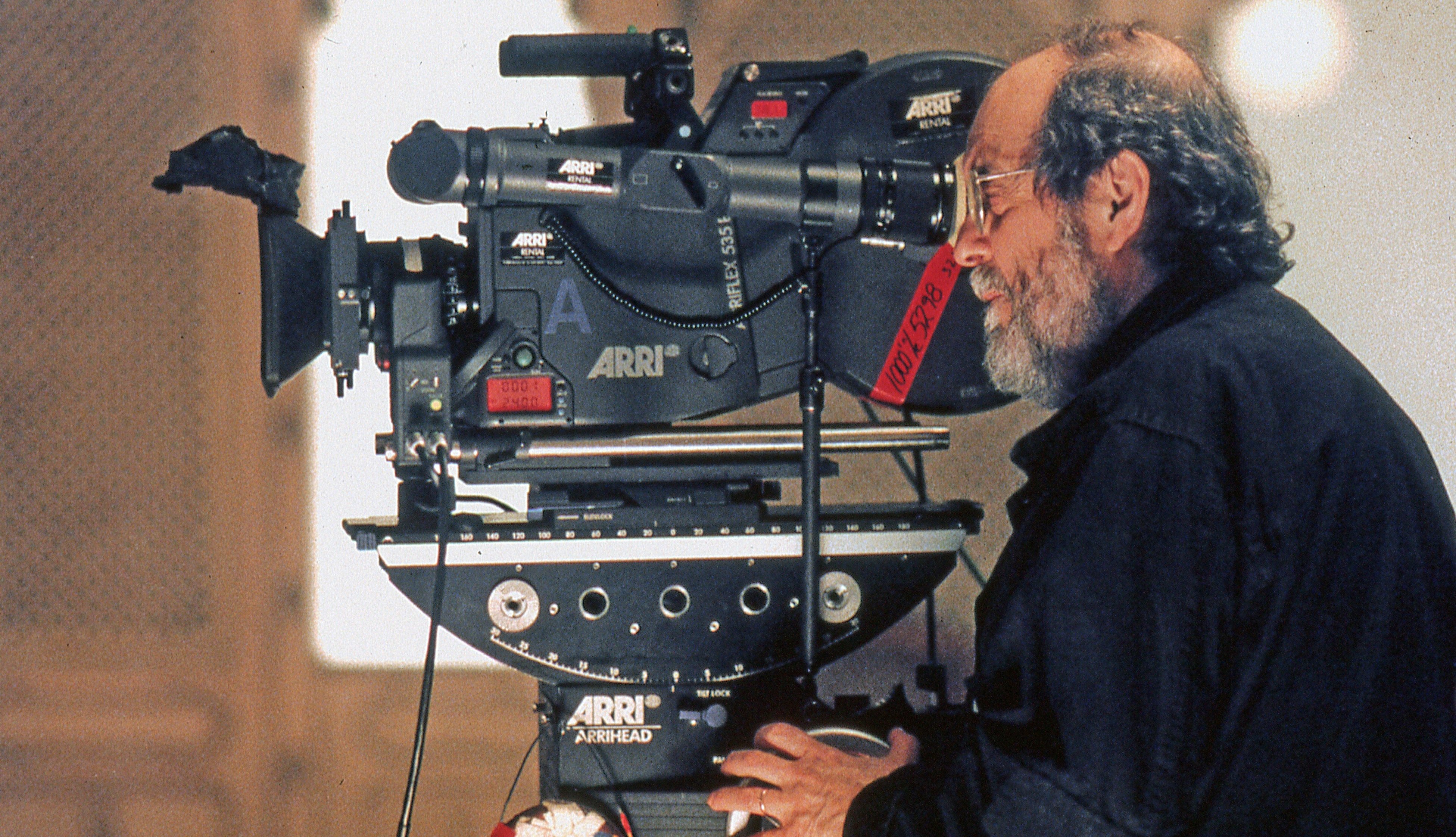
Milsome and Smith are today both members of the ASC.
Additional material for this remembrance was provided by Stephen Pizzello, excerpted from AC issues Jan. 1961 and May ’91 (Spartacus), June ’68 and Oct. ’69 (2001: A Space Odyssey), Mar. ’76 (Barry Lyndon), Aug. ’80 (The Shining) and Sept. ’87 (Full Metal Jacket).
If you enjoy archival and retrospective articles on classic and influential films, you'll find more AC historical coverage here.






